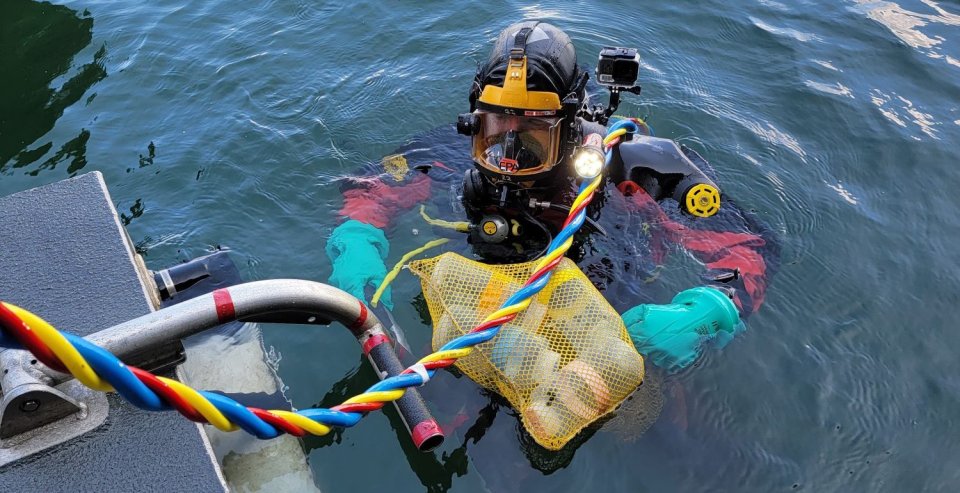ERT: Dive Team

The Environmental Response Team's (ERT) Dive Team conducts scientific diving operations, primarily at Superfund sites and oil spills. With over 30 years of diving experience across the nation, dive team members are experts on polluted water diving and how to safely conduct scientific diving operations under potentially hazardous conditions. Scientists, who are also expert divers, enable EPA to do valuable work underwater and collect unique data in water potentially impacted at Superfund sites or historical legacy sites.
Historically, our nation’s waters suffered from chemical dumping, nonpoint runoff from urban or agricultural areas, or contaminated plumes of groundwater discharging from onshore facilities. The ERT dive team (and other EPA divers) enables EPA project managers to extend their site investigations and cleanups into the depths of rivers, lakes, bays, and harbors, and collect scientific data that cannot be obtained remotely from the deck of a vessel. Whether it is a preliminary sediment investigation or an inspection and sampling of a sediment cap remedy, ERT divers can efficiently fill data gaps to assist with proper remedy selection.
ERT performs dives in depths up to 130 feet, often in contaminated water and in low-visibility and cold water conditions. For chemical, biological and thermal protection, ERT divers wear dry suits, full-face masks and dry gloves to minimize exposure to contaminants and/or provide thermal protection to the diver. Depending on the depth of the dive and the type of work, divers either work in buddy teams using standard scuba gear or use surface-supplied air (provided by tanks on the vessel deck) provided through an air hose or umbilical from the surface.
At Superfund sites in New Hampshire, Virginia, San Francisco Bay, Portland Harbor and Texas, ERT divers are now using passive sampling devices that directly absorb site contaminants over time. The analytical data provide a sensitive measurement of the soluble components in water and sediment that are bioavailable to fish and benthic organisms. At sites in New York, New Jersey and Texas, ERT recently used side-scan or high-resolution sonar to locate scientific instruments, search for possible illegal dumping of chemical containers, or safely guide scientific divers under hazardous, low-visibility conditions.
